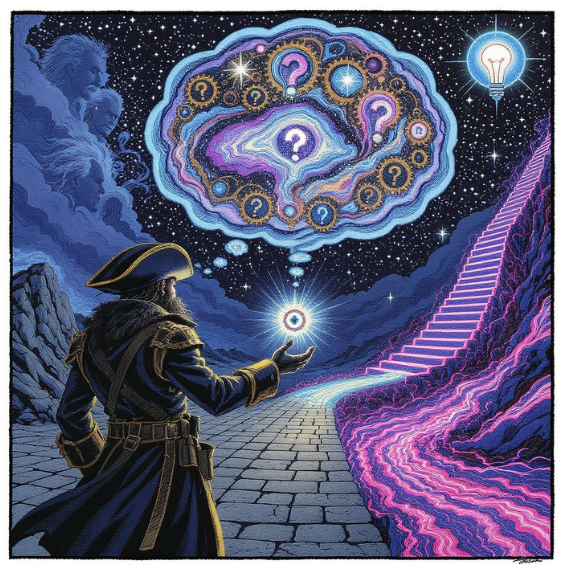Category Creation for Startup Entrepreneurs: How to stop competing and start creating

Let’s start with a painful truth: most startups never actually start something new.
They enter an existing market.
They build a slightly better product.
And then they drown in a sea of sameness.
That’s not entrepreneurship.
That’s incrementalism with a hoodie.
If you want to build something legendary—not just “fundable”—you have to stop playing the game others designed.
You have to create your own category.
1. The Startup Lie: “Build a Better Product and You’ll Win”
This is the oldest lie in Silicon Valley.
The myth that innovation is all about the product.
But here’s the real problem: better doesn’t win. Different does.
History is littered with companies that had better tech and still lost—because they tried to compete inside someone else’s frame. BlackBerry had the better keyboard. Apple built a better category (the smartphone). MySpace had more users. Facebook built a better category narrative (real identity). Zoom didn’t “out-feature” Webex. It reframed what “simple, reliable video” meant in a hybrid world.
Startups die not because their product sucks. They die because they fail to tell the world what game they’re actually playing.
2. What Category Creation Really Means
Category creation is not marketing spin.
It’s the business discipline of designing the space you own.
It’s what happens when you do three things with legendary precision:
- Frame the problem in a way no one else has.
(You teach the world to see what’s been invisible.) - Name the solution in language people can’t un-hear.
(You coin the phrase that organizes belief.) - Claim the position before anyone else knows it exists.
(You take the high ground while everyone else fights in the valley.)
That’s the magic triangle of category design:
Problem → Solution → POV.
And when you get those three aligned?
You don’t compete for demand. You create it.
3. Why Founders Fail at Category Creation
Because they’re trained to think like engineers, not evangelists.
Founders obsess over what they’re building.
Category designers obsess over what people believe.
The product says, “Here’s what we do.”
The category says, “Here’s why it matters.”
And belief beats features every time.
If your startup is struggling to get traction, the issue isn’t distribution—it’s definition. You haven’t defined the problem clearly enough for the world to care.
You’re trying to win a market instead of making one.
4. Category Design Is a Strategic Weapon
Think of it like this:
- Marketing tells the story.
- Sales converts the believer.
- Category design decides what the story means.
When you define the narrative, you define the economics.
That’s why Salesforce didn’t sell “CRM software.”
They named a new category—“cloud computing.”
That’s why HubSpot didn’t sell “marketing automation.”
They created “inbound marketing.”
That’s why Airbnb didn’t sell “cheap lodging.”
They reframed travel around belonging.
Each of those companies designed a new mental shelf in the minds of their customers. And whoever owns the shelf owns the category.
5. The Founder’s Checklist for Category Creation
If you want to stop blending in and start leading, start here:
- Name the Enemy.
Every category has a villain. What are you fighting against?
(Confusion? Waste? Bureaucracy? Invisibility?) - Design the Language.
What words will you own? If you don’t name it, someone else will—and you’ll lose the conversation. - Declare Your POV.
Don’t describe what you do. Tell the world what you believe.
Great categories start as acts of rebellion. - Concentrate Your Strike.
Don’t spread yourself thin across every marketing channel.
Create a Lightning Strike—a concentrated burst of attention that tips word of mouth in your favor. - Turn Customers Into Superconsumers.
Your early adopters are not “users.” They’re your missionaries.
Make them part of your story. Let them spread your belief faster than your ad budget ever could.
6. Category Creation Is a Leadership Act
Most startups are built to chase.
Category creators are built to lead.
Leadership means you go first.
You take the arrows. You carry the flag.
It’s risky. It’s lonely. It’s uncomfortable.
But it’s also where the leverage lives.
Because when you create the frame, everything inside it bends toward you: Pricing power. Press coverage. Investor interest. Talent magnetism.
The moment you define what matters—others fall into formation around it.
7. How to Know If You’re Building a Category (Not Just a Company)
Ask yourself three questions:
- Do people repeat your language when they describe their world?
If they’re quoting you, you’re shaping belief. - Do your competitors look outdated—even if their product works?
If yes, your POV has changed what “good” means. - Do your customers evangelize you without being asked?
If yes, your narrative is doing the heavy lifting.
That’s category momentum.
It’s the compounding interest of meaning.
8. The Future Belongs to Category Creators
The world doesn’t need more startups.
It needs more founders brave enough to reframe it.
AI is making “better” cheaper.
But “different” will always be priceless.
The founder who builds a new category doesn’t just win market share—they win mindshare. They stop chasing demand and start making it.
So if you’re a startup founder reading this, here’s your call to arms:
Stop tweaking your pitch deck.
Start writing your manifesto.
Stop marketing your product.
Start evangelizing your POV.
The goal isn’t to get people to buy.
The goal is to get people to believe.
Because once they believe—
The buying takes care of itself.
Final Thoughts:
The most dangerous place for a startup isn’t irrelevance—it’s invisibility.
Category creation is how you become seen, heard, and followed.
So go make your dent.
Frame it. Name it. Claim it.
Then light the damn fuse.

Learn more about category creation.
Subscribe to Category Pirates.

